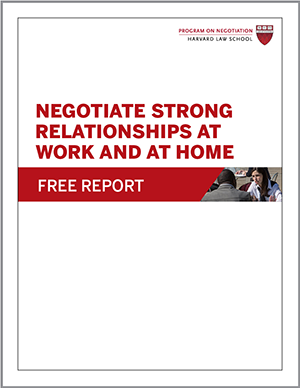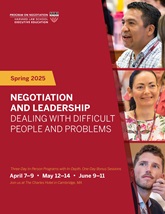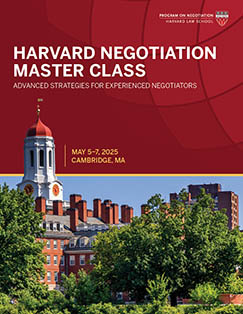
This NHL deal is a classic example of dispute resolution and suggests a valuable way for business negotiators in all realms to break through thorny disputes: expand your focus by looking for tradeoffs that cut across time periods.
Dispute Resolution and Ending the NHL Strike with a Negotiated Agreement
Back in the early hours of January 6, 2012, the National Hockey League (NHL) and the NHL Players’ Association (NHLPA) concluded a 16-hour mediation session by announcing they had reached agreement to end a 113-day lockout. The deal was finalized a week later, and the players returned to the ice for a shortened 2012-2013 season on January 19.
The dispute escalated as the two sides faced the task of negotiating a new collective-bargaining agreement beginning in July 2012. Citing a desire to bring player salaries in line with those of other professional U.S. sports leagues, the NHL opened with an aggressive proposal to reduce players’ percentage of hockey-related revenue from 57% to 43%, among other demands.
Offended by the proposal, the NHLPA held off a full month before delivering a counterproposal. Donald Fehr, the union’s lead negotiator, put forth an offer that separated player salaries from league revenue, slowing the growth of player salaries, and dividing revenues saved among financially struggling teams.
The team owners accused the union of ignoring their demand to greatly reduce player salaries. When the two sides failed to reach an agreement by September 15, the expiration date of their existing contract, the league locked out the players and began canceling games.
Weeks of canceled games turned into months, and the season threatened to go the way of the NHL’s 2004 labor dispute, which led to the cancellation of the entire season.
The players eventually agreed to a 50-50 split of hockey-related revenue with the NHLPA. But the two sides remained at an impasse on other issues, and a breakthrough didn’t come until federal mediator Scot L. Beckenbaugh entered the picture, according to USA Today.
When face-to-face negotiations got heated, Beckenbaugh separated the two sides and engaged in shuttle diplomacy, visiting each side in turn to identify issues where they were willing to be flexible.
The two sides reached agreement on a host of issues, but their deal ultimately hinged on the issue of player pensions. The team owners agreed to establish a pension plan similar to that of Major League Baseball players, with the teams making significant contributions to grow the plan. Previously, players were solely responsible for making voluntary contributions to the league’s retirement plan.
The agreement allowed NHL players, whose careers are often short, to concede on the short-term issue of salary in return for peace of mind regarding their long-term financial future. Winnipeg Jets defenseman Ron Hainsey, a key negotiator for the NHLPA, called the pension plan the “centerpiece” of the deal, reports USA Today.
In dispute resolution, consider offering a long-term gain for the other side in return for a short-term concession that you value highly. By looking beyond the immediate future, you may be able to identify new sources of leverage—and resolve your dispute.
Is there anything you’ve learned about dispute resolution from the NHL? Share your opinions in the comments.





Thanks for sharing this great post.
https://nhlpicksandparlays.wordpress.com
Best regards
This is an excellent way for the process of mediation to assist the NHL in resolving their legal disputes whereas they were able to return to the game. This reminds me of how mediation is changing our society right before our own eyes by assisting all parties, including due process, attorney client representation, case law and the awesome practice of mediation to resolve a griggly bear the mutual differences between the players and the owners to business civil discourse. It’s like being faced with a grggly bear versus ending up facing a kaola bear, for the mutual interest of both parties, what’s in the best interst of all parties? Thanks and maybe mediation will continue to impact our entire American society. peace Dr. Steele